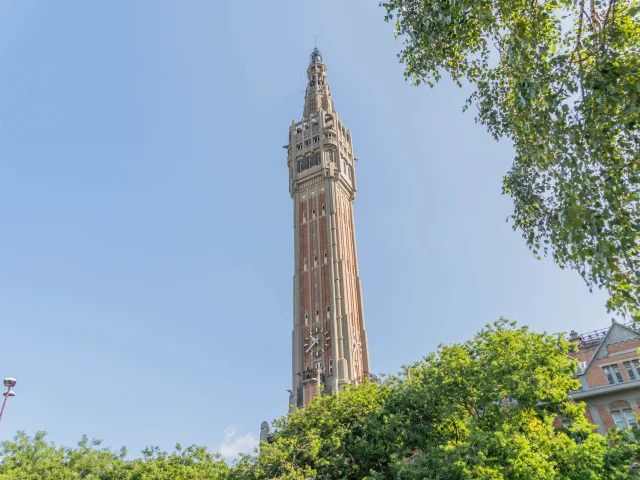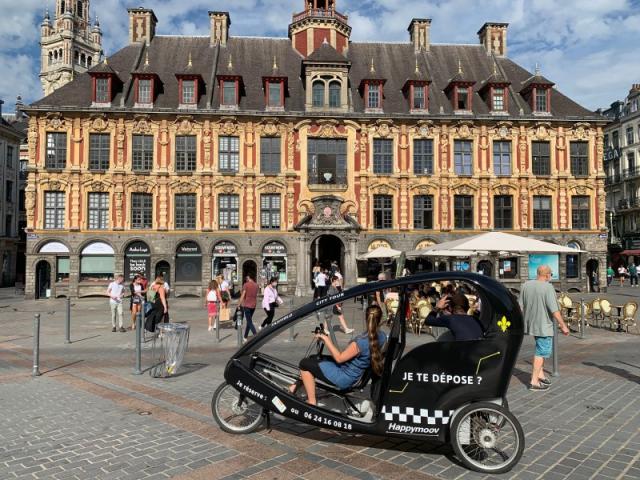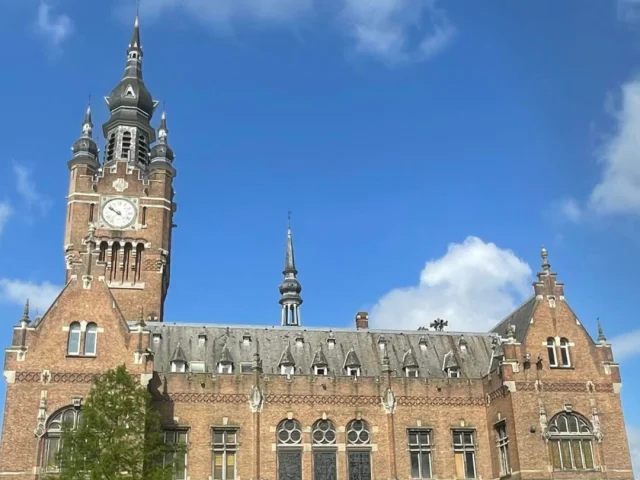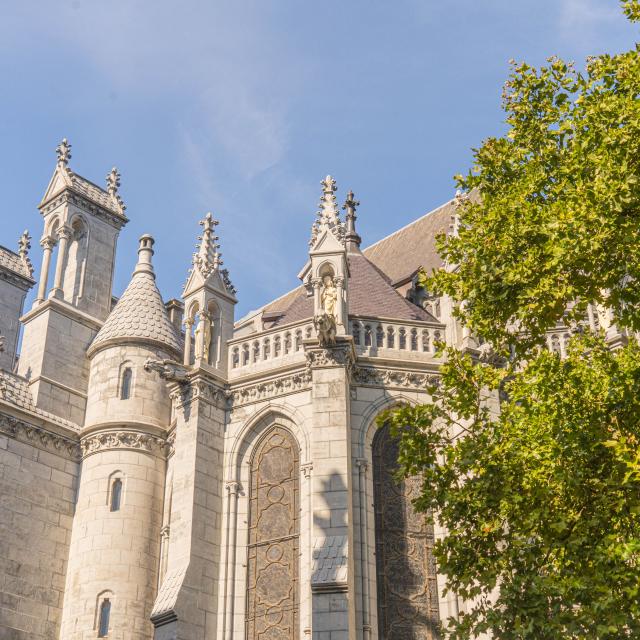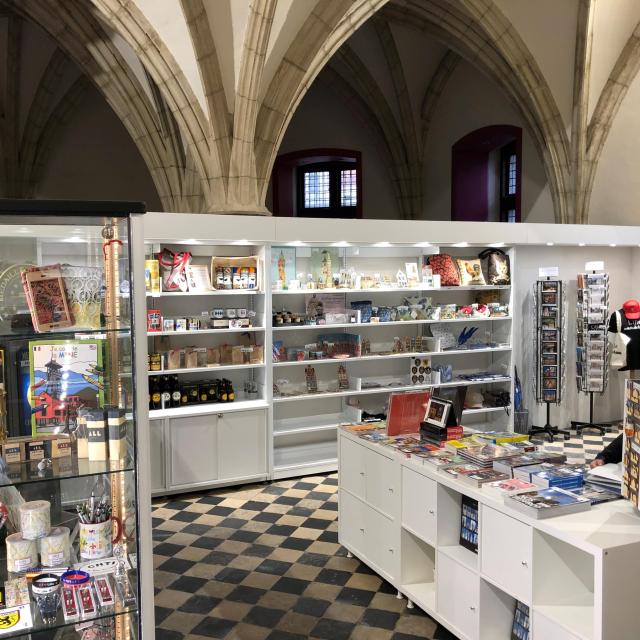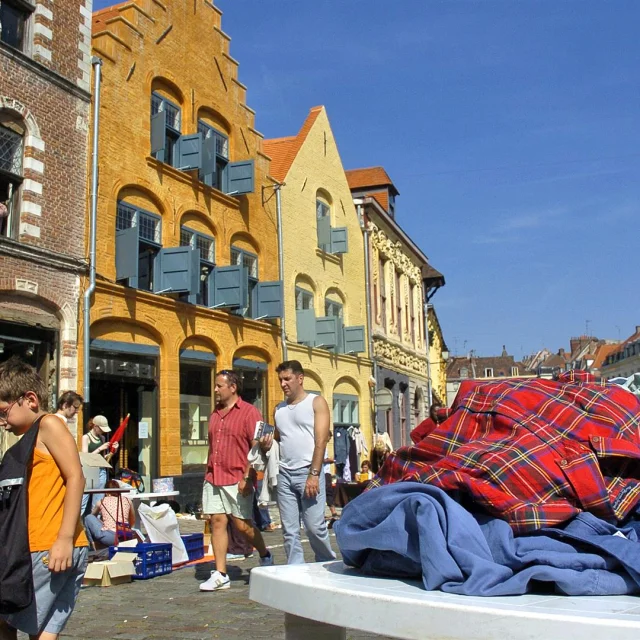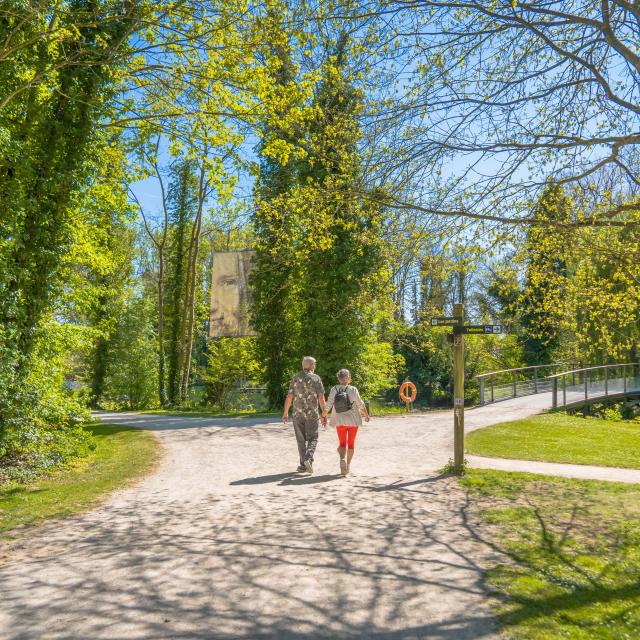The belfry ofLille Town Hall
Inaugurated on 16 October 1932, Lille’s belfry was conceived as a true work of art by architect Émile Dubuisson. Noble materials such as wrought iron, marble, wood and concrete were used to showcase the richness of local craftsmanship and expertise.
A symbol of post-war reconstruction, it boasts monumental Art Deco architecture, blending clean lines with intricate detailing. Its slender silhouette, alternating brick and concrete, embodies both municipal power and the ambition of an entire era.
Once inside, you can climb the 415 steps—pausing at each landing to catch your breath and take in the stories of this soon-to-be centenarian monument. Or take the authentic lift instead. At the top, a breathtaking and unobstructed panoramic view awaits you!
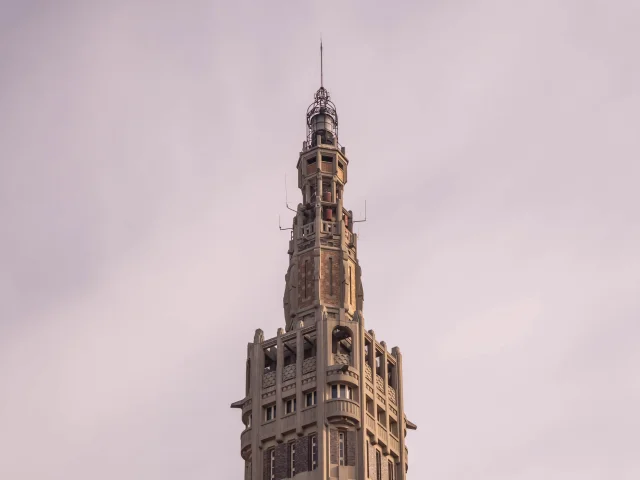 Town Hall Belfry
Town Hall Belfry CCI Belfry
CCI BelfryThe Belfry of the Chamber of Commerce and Industry
Designed by architect Louis-Marie Cordonnier in a neo-regionalist style inspired by 17th- and 18th-century Flemish architecture, Lille’s Chamber of Commerce was originally intended to replace the Old Stock Exchange. If you’re lucky enough to step inside, be sure to admire its majestic dome above the grand hall.
Its paintings and stained-glass windows pay tribute to the region’s powerful commercial and industrial past. Its 76-metre-high belfry adds a striking presence to Théâtre Square. Every day at noon, listen closely as the 25 bells of its carillon play the local lullaby “P’tit Quinquin”.

